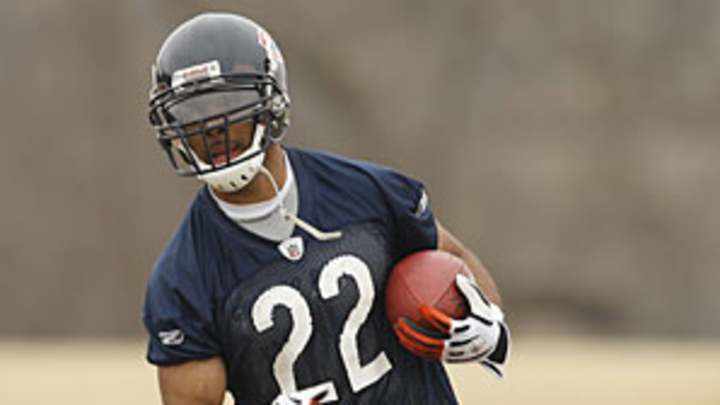Workhorses and racehorses

Be forewarned, dear reader: The truths I am about to reveal to you are shocking, and may lead you to question everything that you have been taught.
I am not referring to revelations involving deities or the meaning of life, nor am I privy to the government conspiracies espoused by the like of Jesse Ventura and Michael Moore. No, my one true revelation involves the one thing most sacred to us all: the extinction of a truly marvelous creature.
The rare breed in question is the studus runningbackus ... otherwise known as the Stud Running Back. For the past several years, I've been writing an article entitled Workhorse or Racehorse -- in fact, this article was intended to be the 2009 installment of the long-running feature. However, statistical analysis has led me to this somber state.
You see, I was always of the belief that workhorses and racehorses were the key to fantasy football success. A workhorse was a runner who logged 75 percent of his team's carries; a racehorse logged at least 75 percent of his team's rushing yards.
Well, asking the Sports Grumblings supercomputer Mighty Max to crunch the numbers for 2008 produced a continuation of startling results: There was just one racehorse runner -- Adrian Petereson -- who logged 75.47 percent of the Vikings' rush yards. Looking for workhorse runners produced an even more dismal result: There were no workhorse runners in the NFL in 2008.
Shocked, I asked Max to produce the workhorse/racehorse data for the top 10 runners from 2008 (using World Championship of Fantasy Football scoring rules). Max gleefully complied:
Matt Forte came tantalizingly close to being the now-rare Workhorse/Racehorse combo ... something to keep in mind come draft time.
Of course, the Sports Grumblings famous BDDM will more fully address the statistical value of RBs in 2009 (due in late June), but it should be obvious even to Terry Bradshaw that there are fewer and fewer runners that fantasy owners can depend on. So what are we to do in our upcoming drafts?
Let's redefine "workhorse" and "racehorse" runners to better reflect the changing nature of RB corps in the NFL; setting the cutoff at perhaps 65 percent of their teams' rushing attempts and rush yards, respectively, would give us insight into solid RB candidates for our 2009 drafts. Mighty Max was quick to produce the results:
Looking at the results above, there are some observations that stand out:
• There is only a handful or runners that qualify for either Workhorse or Racehorse status
• There are a trio of runners that meet our new criteria to be true "stud running backs": Clinton Portis, Matt Forte and Adrian Peterson.
• Some players are conspicuous by their absence. Notably, top performers like Brian Westbrook (54%/55%), Steven Jackson (61%/63%) and Marshawn Lynch (57%/56%) qualify as neither workhorses nor racehorses.
While this analysis certainly cannot be used in isolation to build a cheatsheet of RBs, it does provide insight into the subtleties of drafting runners in a "running back per committee" (RBBC) world ... especially in later rounds. Wouldn't Jamal Lewis be an attractive sixth-round pick as an RB3 or RB4 knowing that he is likely to get 65% of the touches in Cleveland in 2009? Of course he would!
John T. Georgopoulos is the publisher of Sports Grumblings, a fantasy sports portal providing strategy, articles and online tools to help you DOMINATE your leagues. John's Fantasy Forecast® series won the prestigious Fantasy Sports Writers Association (FSWA) award for Best On-Going Series. Visit Sports Grumblings today and get on the path to DOMINATING your fantasy football league!
